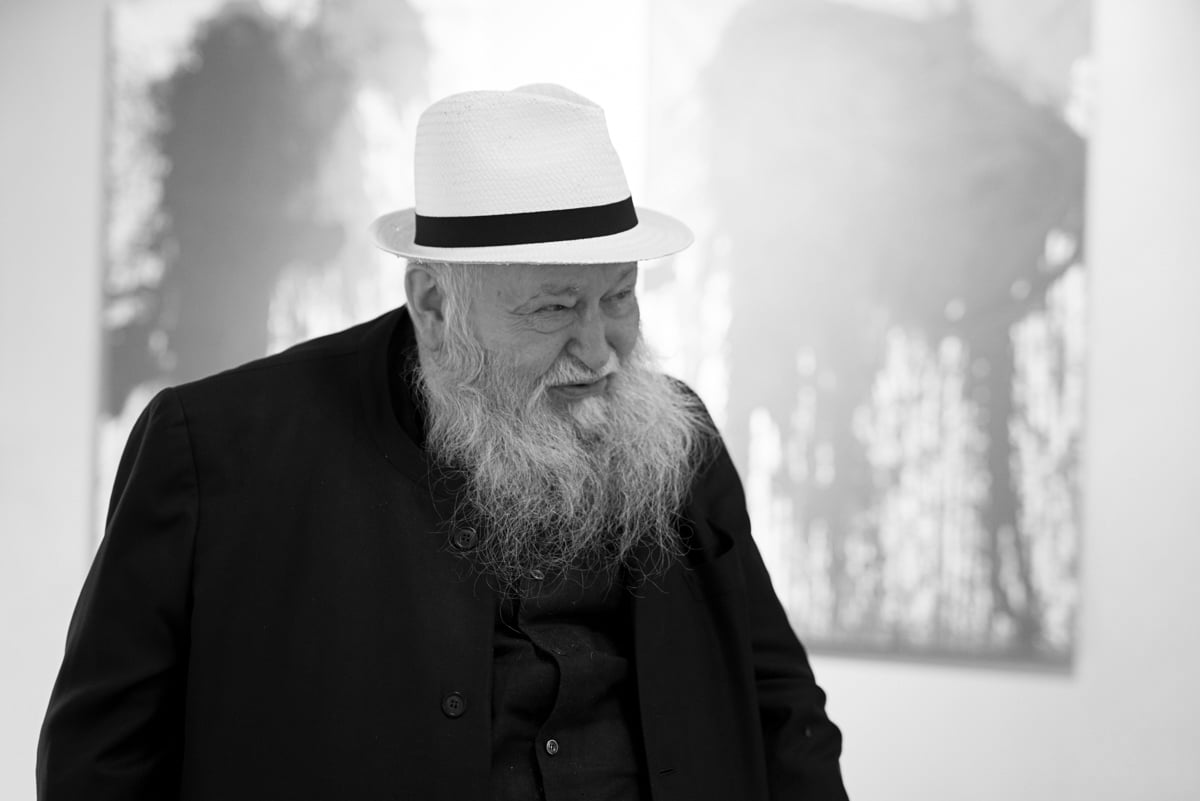
Hermann Nitsch, the Austrian artist who used blood, viscera, and splattered paint in ritualistic and often controversial artworks about religion, war, and metaphysics, died yesterday, April 18, 2022. He was 83.
The news was confirmed by the artist’s family, who said in a statement shared with Austrian news outlets that he died peacefully “after a serious illness.”
“We deeply mourn the death of Hermann Nitsch,” the artist’s foundation said, calling him not only a “performance artist, painter, graphic artist, and composer” but also “a husband, father, friend, mentor, and companion.”
Austrian President Alexander Van der Bellen echoed the sentiment on social media, writing: “His work will live on, I’m sure of it.”
Hermann Nitsch, 20th painting action (1987). ©Hermann Nitsch. Photo: Heinz Cibulka.
Nitsch’s death coincided with the first day of the 59th Venice Biennale, where his 20th painting action, a series of poured paintinga done in Vienna 35 years ago, are on display in an exhibition presented by Zuecca Projects in collaboration with Galerie Kandlhofer. Nitsch did not travel to Venice for the opening.
The show marks the first time that all components of 20th painting action have been displayed since they were created at the Wiener Secession in Vienna in 1987.
Inaugurating the occasion, a large private dinner was held at the exhibition space last night. Attendees told Artnet News that they did not know of Nitsch’s status at the time of the event.
“While the timing was unexpected, it somehow feels fitting that we were honoring him and his artistic genius last night,” said art advisor Rebecca Taylor, who attended the dinner. “He was an extraordinary artist and a very special person.”
Born in Vienna on August 29, 1938, Nitsch was a founding member of the Viennese Actionists, a loosely affiliated group of Austrian avant-garde artists who practiced a confrontational brand of performative artmaking. It was around 1957 that he first conceived of Orgies Mysteries Theatre, a complex artistic ritual that included blood, animal carcasses, religious sacrifices, music, and dancing.
From those performances evolved Nitsch’s “action paintings,” his signature works. The first example came in 1960 and involved the splashing and smearing of paint on canvases. In the ensuing years, Nitsch began incorporating blood, crucified animal carcasses, and other non-traditional materials. By 1963, he had abandoned painting altogether.
Hermann Nitsch, 83rd action (1987). ©Hermann Nitsch. Photo: Heinz Cibulka.
In 1971, Nitsch acquired the Prinzendorf Castle in Lower Austria, where he would live, work, and staged numerous actions in the coming decades. The self-described peak of his career came in 1998, when Nitsch mounted 6-days Play, a marathon action that incorporated around 500 performers (many of them mounted on crosses), 13,000 liters of wine, hundreds of liters of blood, and several animal carcasses.
“I demand from my audience direct sensory experience,” the artist wrote of the event. “The play had directives telling them to taste, smell, look, listen, and touch. Flesh, innards, and fruit were given to the audience to touch and feel. Odors were spread, incense and other materials were burnt, liquids like blood, fuel, vinegar, milk, urine, petrol, turpentine, ammonia, hot water were poured throughout the theatre venue. All this led to the [Orgies Mysteries Theater], which surpassed language.”
6-days Play will be performed in a condensed form for just the second time ever at the Prinzendorf on July 30 and 31 of this year. The foundation said it was Nitsch’s “specific wish that his total work of art the Orgies Mysteries Theater will continue after his passing.”
“Today the world lost a pioneering artist who redefined performance and painting through his visceral and existential work, which will continue to live on and continue to inspire generations of artists to come,” said Marc Glimcher, CEO of Pace, which began representing Nitsch (in collaboration with Galerie Kandlhoferthe and the artist’s foundation) in February.
“His passing comes at a poignant time as we mark his achievement with an exhibition in Venice that we hoped to celebrate with him.”